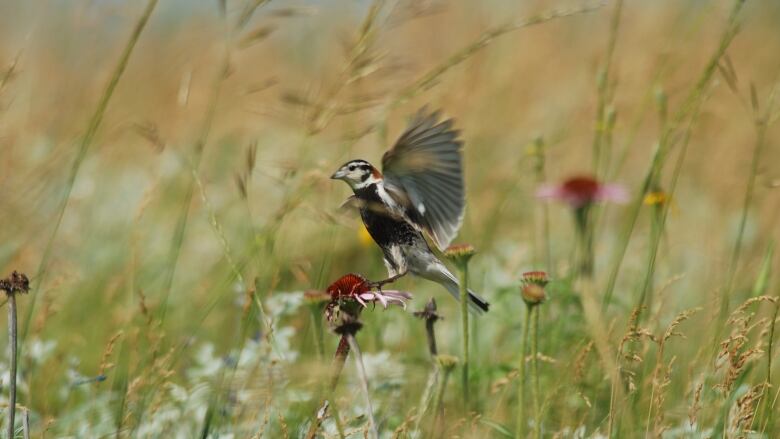Group hopes to protect at-risk birds with new conservation area near Craven, Sask.
135-hectares to be called Valley View

It hasn't been easy in recent decades for the chestnut-collared longspur.
The insect-munching bird with a splash of rusty red on its back is native to Saskatchewan. Its numbers have declined dramatically, but now a nature group is hoping to create a safe place near Craven for longspurs and other at-risk species.
On Friday, the Nature Conservancy of Canada unveiled plans for a conservation area, called Valley View, in the Qu'Appelle forestry area.
The non-profit organization purchased more than 135 hectares of land with money coming from Ottawa and the provincial government. The total amount spent was not immediately available.
Jennifer McKillop, the group's Saskatchewan conservation director, said there is still a lot of work to do.
"In Saskatchewan there is approximately 20 per cent of our native grassland left," McKillop said. She said the organization is continuing to secure property for conservation.
A video released by the group Friday shows an area rich with green rolling hills andmeandering streams.

Species at risk likely found in Valley View
The grassland area is believed to be home to several birds that are named under the Species at Risk Act.
The chestnut-collared longspur, which is found in the northern U.S. and the Canadian Prairies, is listed in the act as threatened. Also at risk are the Sprague's pipit and the Baird's sparrow.
The organization says that if the area isn't protected, it's at a high risk for subdivision developments and annual cropping.
Public will have access to protected area
Now that the organization has acquired the property, it plans on conducting a thorough inventory of plants and animals in the area.
After that, it will roll out a plan for protecting the land.
The Nature Conservancy of Canada has public walking paths in a number of its areas around Canada and says it will allow people to enter Valley View by foot.












_(720p).jpg)


 OFFICIAL HD MUSIC VIDEO.jpg)
.jpg)



























































































